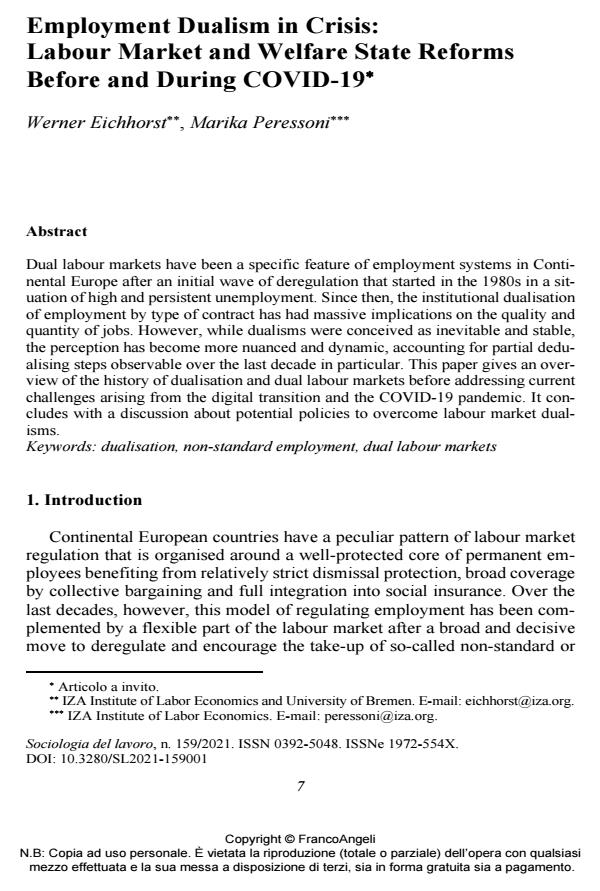Employment Dualism in Crisis: Labour Market and Welfare State Reforms Before and During COVID-19
Journal title SOCIOLOGIA DEL LAVORO
Author/s Werner Eichhorst, Marika Peressoni
Publishing Year 2021 Issue 2021/159
Language English Pages 21 P. 7-27 File size 246 KB
DOI 10.3280/SL2021-159001
DOI is like a bar code for intellectual property: to have more infomation
click here
Below, you can see the article first page
If you want to buy this article in PDF format, you can do it, following the instructions to buy download credits

FrancoAngeli is member of Publishers International Linking Association, Inc (PILA), a not-for-profit association which run the CrossRef service enabling links to and from online scholarly content.
Dual labour markets have been a specific feature of employment systems in Con-tinental Europe after an initial wave of deregulation that started in the 1980s in a situation of high and persistent unemployment. Since then, the institutional duali-sation of employment by type of contract has had massive implications on the quality and quantity of jobs. However, while dualisms were conceived as inevita-ble and stable, the perception has become more nuanced and dynamic, account-ing for partial dedualising steps observable over the last decade in particular. This paper gives an overview of the history of dualisation and dual labour markets before addressing current challenges arising from the digital transition and the COVID-19 pandemic. It concludes with a discussion about potential policies to overcome labour market dualisms.
Keywords: Dualisation, non-standard employment, dual labour markets
Werner Eichhorst, Marika Peressoni, Employment Dualism in Crisis: Labour Market and Welfare State Reforms Before and During COVID-19 in "SOCIOLOGIA DEL LAVORO " 159/2021, pp 7-27, DOI: 10.3280/SL2021-159001